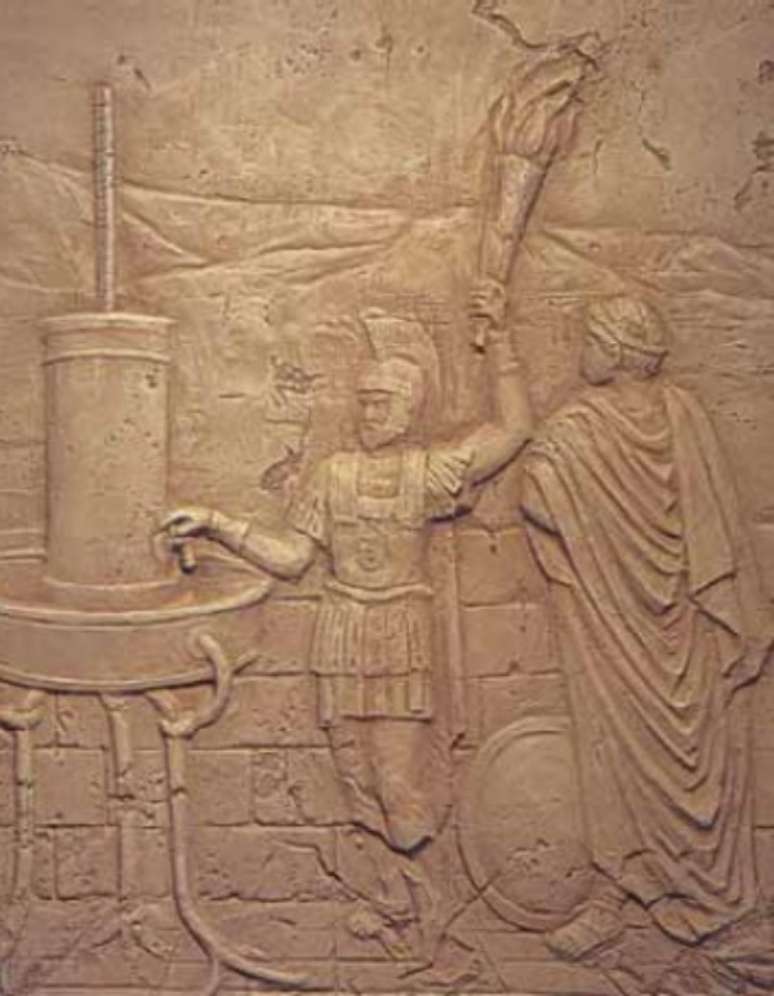Smoke signals were one of the first systems of remote communication used by humanity, but they had limitations that made it difficult to fully transmit messages. Thinking of improving this solution, the Greek writer Aeneas, the Strategist, created the hydraulic telegraph around 350 BC
Specializing in guides on strategies and communications related to the military universe, the author was not satisfied with the results offered by flashlights and beacons for sending messages. These mechanisms allowed people to communicate that something was happening, such as an invasion, but provided no details about what was happening.
To improve communication, he then had the idea of using two jars filled with the same amount of water and a floating rod that bore a series of codes written, identical, on both containers. One was with the sender and the other with the recipient.
The mechanics of the first telegraph created in ancient Greece also required it those who sent the message and those who received it were positioned in a place where one could see the light signal emitted by the other, and vice versa, without difficulty, even from a distance. This signal was generally given by torches.
How did the hydraulic telegraph work?
With Aeneas’s two telegraphers in position, the party interested in sending the message raised the torch, signaling the start of communication. On the other hand, the receiver had to give the same signal, indicating that he was ready to start the process.
Then, the sender had to lower the torch and open the valve located at the bottom of the container to let the water flow out, which had to be done simultaneously on the other side. As the water flowed, the rod containing the messages also fell, until the sender raised the torch again and turned off the tap, reporting the same measurement to his colleague.
When the system was stopped, both containers had to be the same height, indicating the message the first group wanted to convey. For this reason, synchronization between the participants was essential, since a small delay on the part of one of them would have resulted in an error in the message sent.
Although it was simple, the technology behind the hydraulic telegraph was quite efficient and optimized distance communication at the time. The system invented by the Greek writer influenced a more advanced mechanism developed centuries later by the British engineer Francis Whishaw.
Use in the First Punic War
The First Punic War, which took place between 261 BC and 241 BC, had the telegraph created by Aeneas as one of the main instruments. In the conflict between Carthage and Rome, at the time two of the major powers in the western Mediterranean, the communication device helped send messages from Sicily to Carthage.
The first war, which began with the capture of Messina by the Romans, ended with the defeat of the Carthaginians. Two more conflicts subsequently occurred, with Rome dominating the Mediterranean Sea.
Source: Terra
Ben Stock is a lifestyle journalist and author at Gossipify. He writes about topics such as health, wellness, travel, food and home decor. He provides practical advice and inspiration to improve well-being, keeps readers up to date with latest lifestyle news and trends, known for his engaging writing style, in-depth analysis and unique perspectives.





![Everything for pre -light: Victoria Solen is bent … which is waiting for you on Tuesday, August 12, August 12, 2025 in 42 episodes [SPOILERS] Everything for pre -light: Victoria Solen is bent … which is waiting for you on Tuesday, August 12, August 12, 2025 in 42 episodes [SPOILERS]](https://fr.web.img3.acsta.net/img/94/98/9498e97473cd445af2e7f350b91d357e.jpg)


